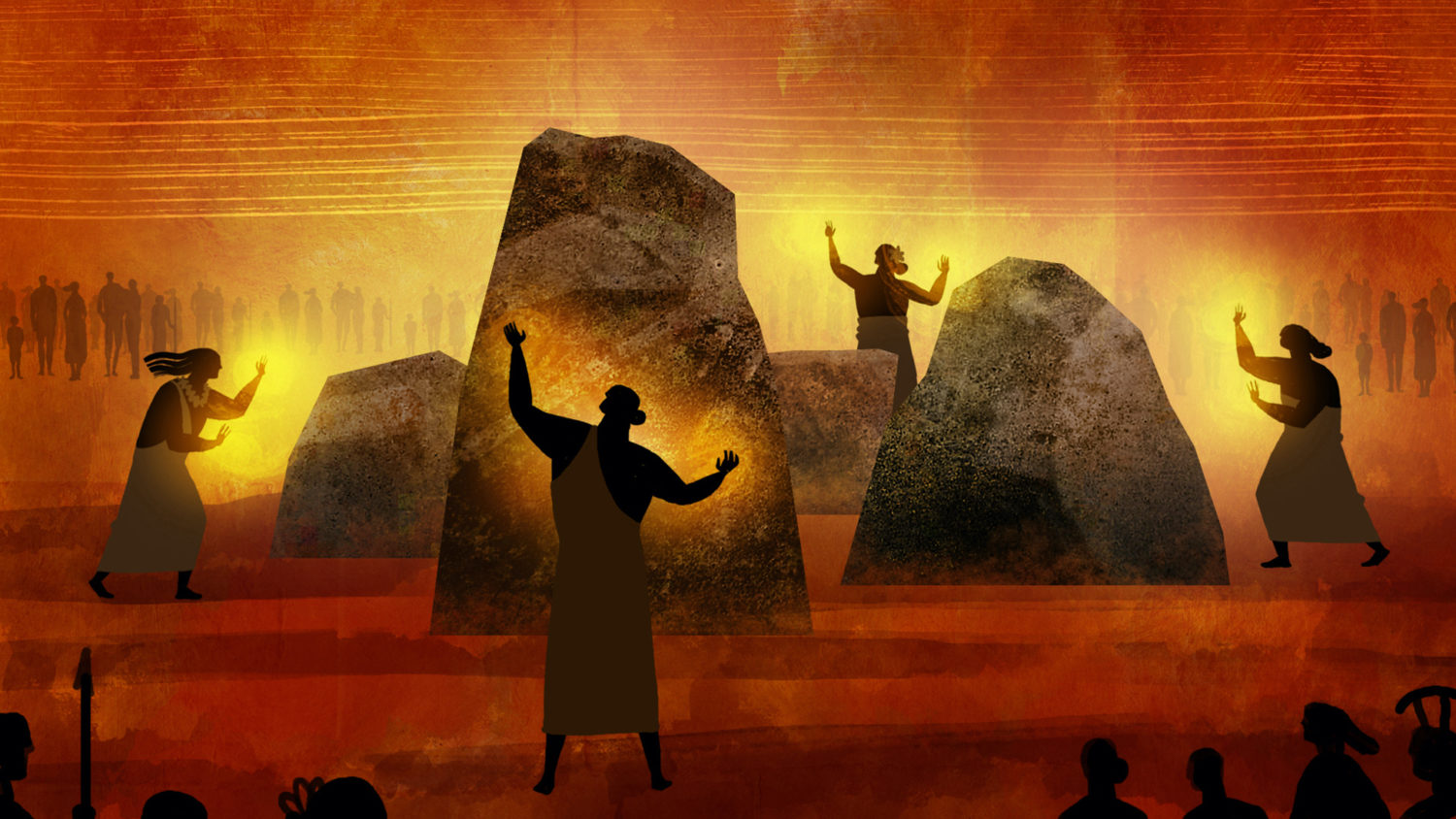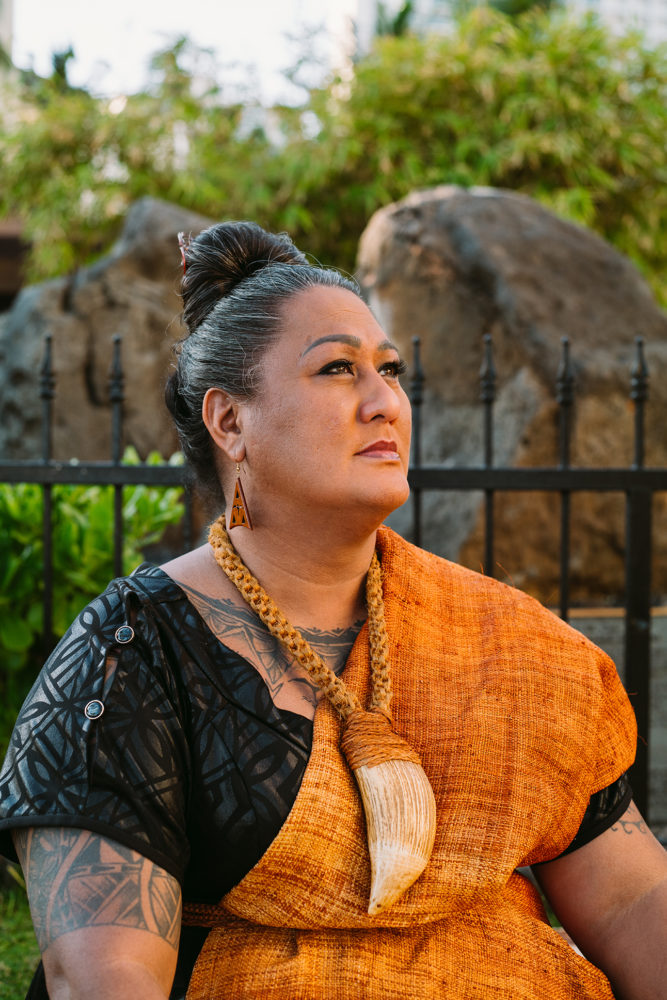The healer stones of Kapaemahu on Waikīkī Beach honors gender fluid heroes in Hawaiian culture.
Just off the sparkling waters of Waikīkī Beach and a kukui nut’s throw from Duke Kahanamoku’s bronze statue, a monument from precolonial Hawai‘i survives.
Four boulders, originally excavated from the hills of Kaimukī, dwell together in varying natural shapes. Unassuming in appearance, the stones are erected on an ahu and circled by a low steel fence, passed unnoticed by thousands of locals and tourists daily.
I, too, am guilty of such cultural blindness. After countless surf sessions out at Canoes surf break, as I waited for my dad to finish showering, I often rested on the grassy patch in front of the monument to avoid the bustling crowds and sticky sand.
Oblivious as the pigeons that nestled on their sun-soaked surfaces, I never took the time to read the plaque that told of the stones’ significance. Yet, thinking back, there was always evidence of the stones’ reverence, however few at the time: a crinkly and browning tī leaf lei draped over the fence, its braid still tight from skilled hands; a freshly-bought purple orchid lei laid to rest on the ahu.
As the mo‘olelo goes, long before Queen Lili‘uokalani and King David Kalākaua each ruled the Hawaiian Kingdom, long before the first Western missionaries disturbed these sands, four travelers from Tahiti arrived humbly and with pure intent.
Their names were Kapaemahu, Kapuni, Kinohi, Kahaloa, and they were healers, each with a distinct touch. They were, also and foremost, māhū—a fact censored over time by Western influence and its confining notions of gender.
A term unfamiliar to most Westerners, māhū is derived from Pacific Islander cultures which describes a person of dual male and female mind, heart, and spirit. Closely related to two-spirit identities of Indigenous communities, māhu points to a cultural acceptance of and respect for gender fluidity, attitudes withheld toward trans people today.


These four māhū healers were “tall and deep in voice, yet gentle and soft-spoken,” as recounted in the animated short film Kapaemahu (2020), and kindly accepted by the Hawaiians to whom they offered their services. Already highly spiritual beings for their ability to access both male and female parts of themselves, the visitors performed magical feats of healing on the community from Ulukou in Waikīkī, looked over by the crater of Lēʻahi. The healers were generous and passed on their knowledge to the Hawaiians, who in turn created a monument for them before they departed. Inch-by-inch the people dragged the stones from the hills of Kaimukī to the sands of Ulukou, where an extended ceremony took place under a changing moon. Over the course of a full moon cycle, the healers chanted an ‘oli over their respective stone, transferring their mana into the monument, before disappearing.
As centuries went by and Hawai‘i transformed into a city unrecognizable, the Kapaemahu stones remained at the center of Waikīkī, giving the place a spirit of healing. Most notably, Queen Lili‘uokalani knew the mo‘olelo of the stones and experienced their power. After being injured in a carriage accident, she spent time at Hamohamo, an area which adjoins Ulukou.
“Hamohamo is justly considered to be the most life-giving and healthy district in the whole extent of the island of O‘ahu,” she wrote. “There is something unexplainable and peculiar in the atmosphere at that place, which seldom fails to bring back the glow of health to the patient, no matter from what disease suffering.”
Although ali‘i such as the Queen and her niece Princess Ka‘iulani often resided in Waikīkī, it remained a place welcoming of all maka‘āinana. All Hawaiians could harness the healing powers of the stones, if they so believed.


Although as time went on, the knowledge and existence of the stones were put at risk of erasure. In 1941, the stones, once revered and protected by the ali‘i family of Princess Ka‘iulani, were covered over by a bowling alley. It wasn’t until two decades later that they were rightfully restored to Ulukou, but the mo‘olelo had become esoteric and censored.
“Growing up, I remember those very stones were the ones that we played on as children,” recounts kumu Hinaleimoana Wong-Kalu, Native Hawaiian teacher and co-producer of Kapaemahu. “We climbed on them and laid on them in the sun after swimming the day at Waikīkī. We had no knowledge of their significance. We had no knowledge of their importance.”
Although Wong-Kalu was fortunate to learn the mo‘olelo when she was 18, a narrative integral to her own journey as māhū, many other Hawaiians, locals, and malihini remain unaware to the stones at the heart of Waikīkī. For this reason, Wong-Kalu and filmmakers and life partners Dean Hamer and Joe Wilson produced Kapaemahu, an animated retelling of the mo‘olelo told in the Ni‘ihau dialect that was most likely spoken by the māhū healers. Through the artistry of animator Daniel Sousa, the film is bathed in earthy colors and told through soft and unadorned figures, modesties which underscore the magic of the narrative.


“Dean, Hina, and I all emerged in a society that was not only negative but cast aspersions toward people like us that made our walk even more difficult,” Wilson explains. “When we learned about this site, these stones, and the story it reflects, we saw the potential it had to be one of those amazingly powerful symbols, not just for people in Hawai‘i but for people who visit Hawai‘i, who could start to see a place for themselves in the world through this mo‘olelo and site that celebrates this aspect of life.”
Although Waikīkī is much changed since Kapaemahu, Kapuni, Kinohi, and Kahaloa first brought healing to the community, their mana lives on in the stones, in every retelling of their mo‘olelo, and every māhū who proudly lives their truth. Consider their presence as an invitation to venture a few short blocks along Kalākaua Avenue and visit the stones of Kapaemahu with the same humility and pure intent as those healers once showed us.

